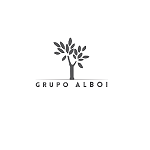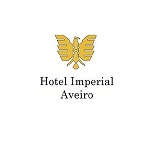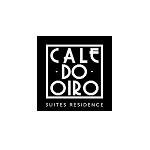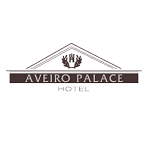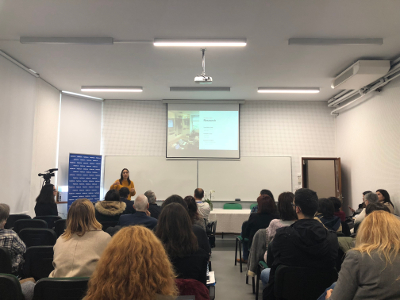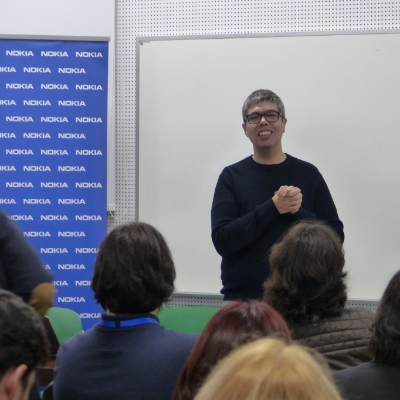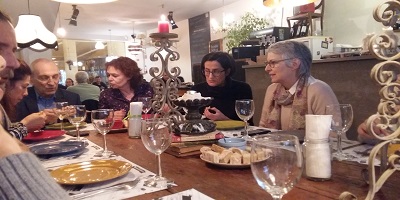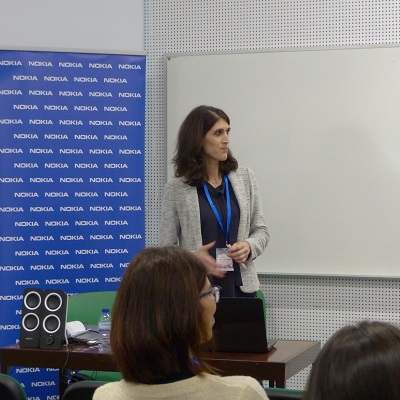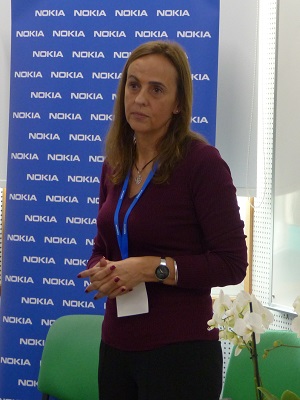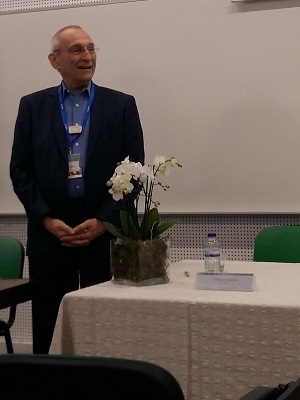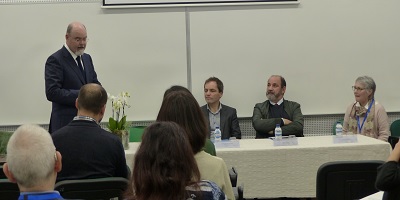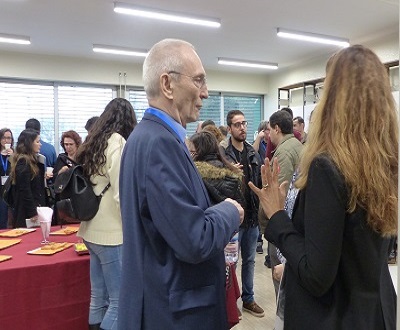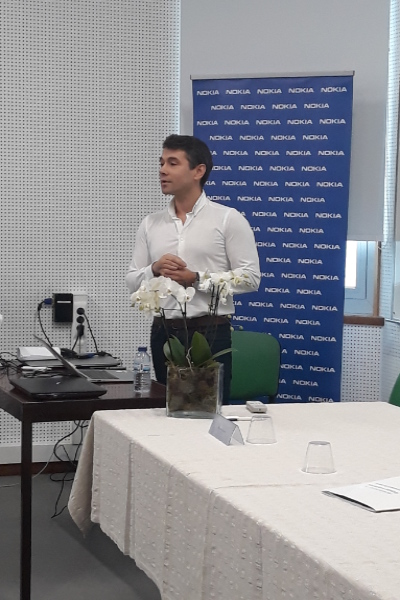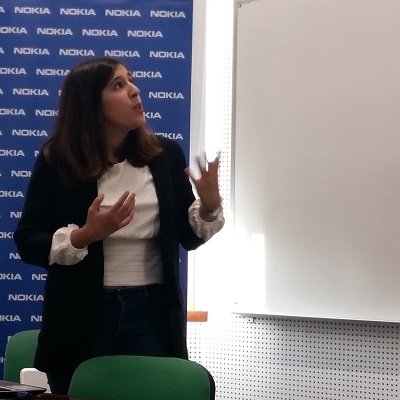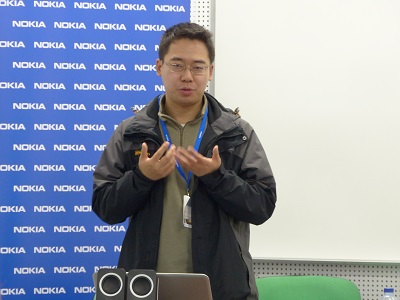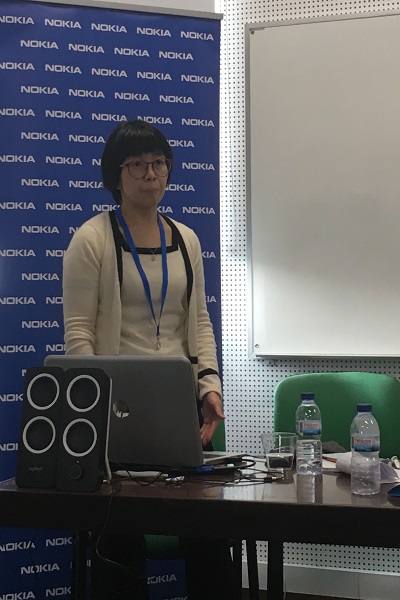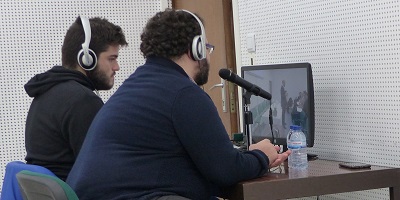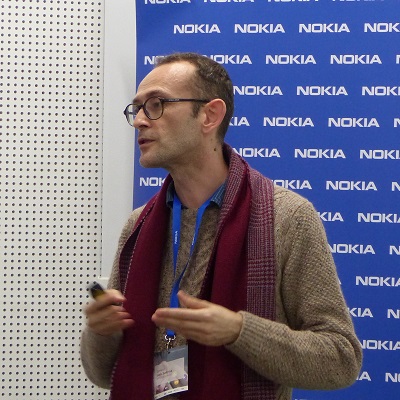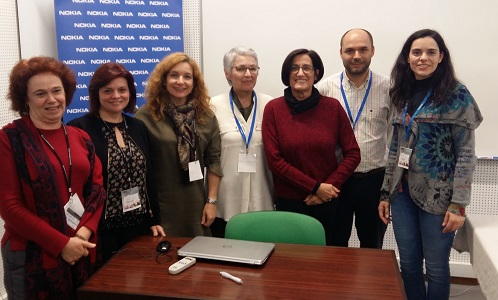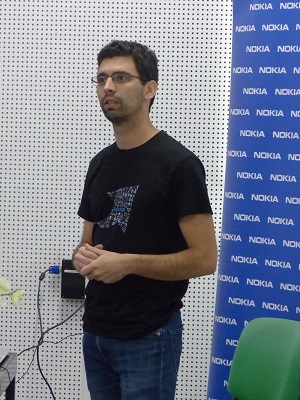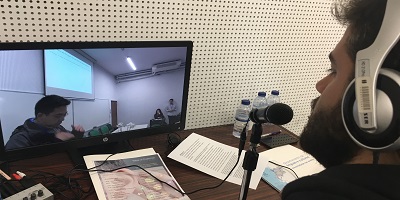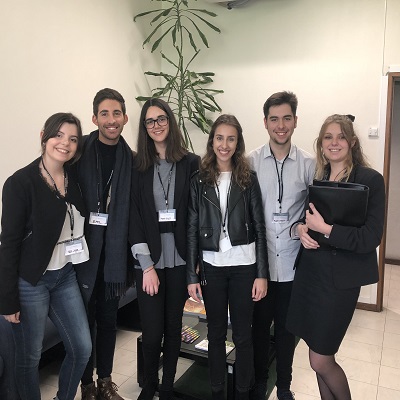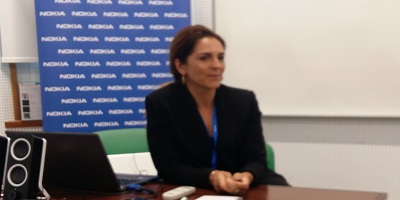-

 29-30 Novembro 2018Universidade de Aveiro
29-30 Novembro 2018Universidade de Aveiro Prazos de inscrição:Oradores: 14 Setembro 2018
Prazos de inscrição:Oradores: 14 Setembro 2018
Participantes: 15 Novembro 2018Participe no Colóquio
Contamos consigo!
A Voz do Cliente 2018
Com este Colóquio de Comunicação Técnica, pretendemos reunir
os que trabalham para os clientes e os próprios clientes,
para atender a lacunas, partilhar ideias e refletir sobre novas maneiras de fazer mais e melhor.
Tópicos
- Documentação e Tradução Técnica
A qualidade no workflow de Terminologia
- Comunicar a tecnologia persuasiva
- Materiais para formação
- Materiais de marketing
- Suporte técnico
- Avaliação de necessidades
- Falhas de qualidade
- Validação de conteúdos
- Valor Percebido pelo Cliente
- Experiência do utilizador
- Gamificação
- Meios de comunicação
- Chat bots
- Comércio eletrónico
- Realidade aumentada
- Accessibilidade
- Resolução de problemas
Oradores Principais
Contribuições valiosas de pessoas com
vasta experiência na área da voz do clienteSuporte Multilíngue
Suporte multilíngue para inglês e português
Intervalos para café
Tempo para conversar, relacionar
e partilhar: pensamentos, experiências, ideiasOradores
Oradores Principais
-

Christian Galinski
Diretor
Infoterm
-

Jody Byrne
Diretor da Prototipagem de
Assistência ao Utilizador
SAP Irlanda
-

António Câmara
Professor Catedrático
Univ. Nova de Lisboa
-
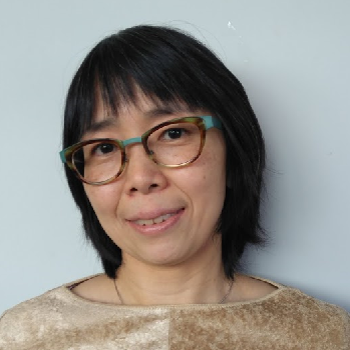
Naoko Ito
Especialista em Documentação
de Cliente - NOKIA
Christian Galinski
C. Galinski estudou japonês e chinês, assim como I&D (informação e documentação) e linguística aplicada nas Universidades de Bona e Viena.
Nos anos 70, foi pioneiro na documentação técnica na indústria focando-se no japonês. Investigador e redator técnico profissional no Inforterm, ISO, IGO, CEN, entre outros.
Os projetos europeus nos quais participou como representante do Infoterm focaram-se nos aspetos da comunicação técnica, no papel dos serviços linguísticos e da indústria linguística, e regras linguísticas e terminológicas, recentemente também em comunicação com e entre pessoas com incapacidades (PcI), assim como atividades pertinentes de padronização.
Desde há muitos anos, C. Galinski trabalha como consultor para organizações nacionais, europeias e intergovernamentais (OIG) assim como diversas organizações não-governamentais(ONG) mundiais, incluindo a ISO.
É o autor de muitas publicações no campo da terminologia e áreas relacionadas, incluindo diferentes tipos de conteúdo estruturado (aqui com o significado de micro-conteúdo) e o seu papel no Negócio electrónico e Comércio electrónico.
Jody Byrne
Jody Byrne é um profissional de comunicação técnica com 20 anos de experiência como tradutor técnico, autor, professor, produtor de vídeo e consultor de assistência ao utilizador (AU).
Escreveu imensas publicações, incluindo dois livros acerca de comunicação técnica e tradução. Como Arquiteto de Desenvolvimento de AU para a SAP Ireland, é o diretor do Laboratório de Prototipagem de Assistência ao Utilizador, que pesquisa e desenvolve novas formas de comunicar informação técnica.
António Câmara
António Câmara é Professor Catedrático na Universidade Nova de Lisboa.
Obteve a Licenciatura no IST (1977), e o PhD em Engenharia Civil em Virginia Tech (1982). Foi Professor Visitante em Virginia Tech (1988), Cornell University (1988-89) e MIT (1998-99).
António Câmara foi pioneiro na investigação de simulação, sistemas de informação geográfica, realidade virtual e aumentada. Tem mais de 200 publicações internacionais, incluindo o livro Environmental Systems, (Oxford University Press, 2002). Orientou trinta e um doutoramentos em Portugal e foi co-orientador de seis outros em Georgia Tech, Virginia Tech, MIT, Pompeu Fabra e Free University of Amsterdam.
Foi co-fundador de três empresas listadas internacionalmente: YDreams Global (listada em Toronto e Frankfurt); Azorean (Euronext Paris); e Ynvisible (Toronto). Foi co-fundador ainda de The Inventors e Aromni. Estas empresas desenvolveram mais de 1300 projectos em trinta países para cinquenta empresas do Fortune 500. A sua actividade foi reportada nos principais media globais.
António Câmara recebeu mais de vinte prémios nacionais e internacionais, destacando-se o Prémio Pessoa em 2006, e uma das Entrepreneurs of the Year Awards da União Europeia em 2008.
Naoko Ito
Naoko Ito é Especialista em Documentação de Cliente na NOKIA, trabalhando também como Gestora de Projeto e especialista de documentação no grupo de trabalho 'Voz do Cliente'.
Naoko iniciou o seu percurso há mais de 20 anos na NEC Corporation, no Japão, liderando um projeto de pesquisa em adaptações de conteúdo web para diferentes ambientes de utilizadores.
Enquanto esteve na NEC, também desenvolveu sistemas de monitorização de testes de cliente em campo, e contribuiu para vários Projetos Nacionais Japoneses, incluindo o uso de TI na área da agricultura e o uso comercial de tecnologias ubíquas.
As suas competências envolvem planeamento de projetos, execução de atividades de pesquisa e promoção de resultados para os clientes internos e externos da empresa, no Japão e na Europa.
Foi uma dos representantes da empresa em diversas organizações internacionais de padronização. Para além disso, também traduziu documentos técnicos e livros.
Tem um Mestrado em Ciências da Engenharia pela Universidade de Keio, em Tóquio.
Oradores Confirmados
-
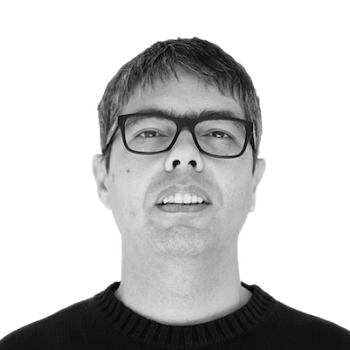
Nelson Zagalo
Professor Associado
Universidade de Aveiro
-
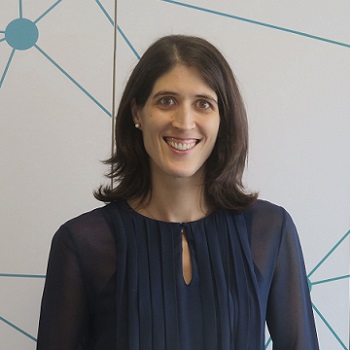
Ana Rita Remígio
Comunicadora Técnica
Bosch Building Technologies
-
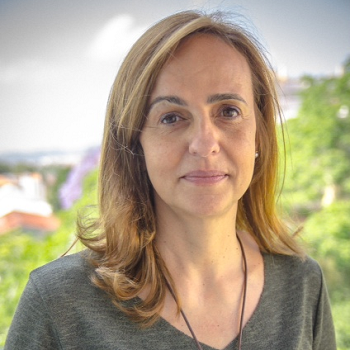
Ana Oliveira
Inspectora Chefe
ASAE
-
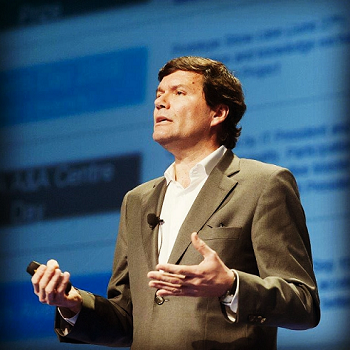
António Oliveira
Gestor da Qualidade de Cliente
Nokia
-
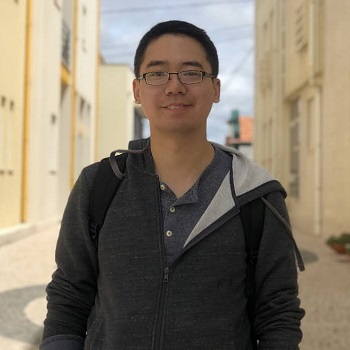
Zhihua Hu
Doutorando em Tradução e Terminologia
UA e UNL
-

Miguel Gonçalves
Fundador e Gestor
E-goi
-
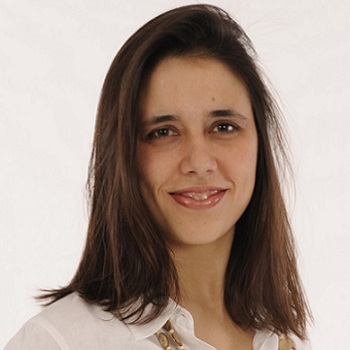
Rute Costa
Diretora de Produto
Farfetch
-
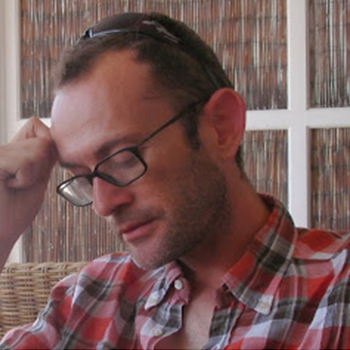
Luís Salema
Docente e Investigador
Instituto Camões
-
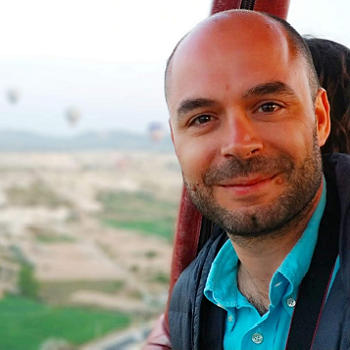
João Marques
Especialista em Comunicação
NOKIA
-
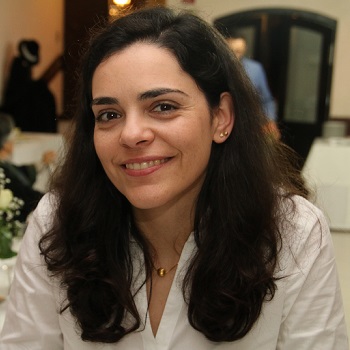
Cláudia Santos
Especialista em Comunicação
NOKIA
-
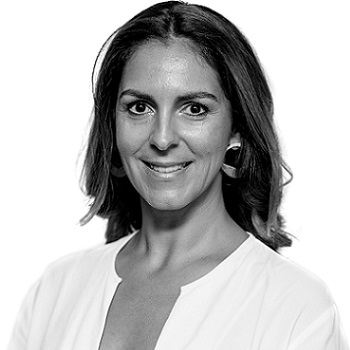
Denise Branco
Doutoranda em Tradução e Terminologia - UA e UNL
-
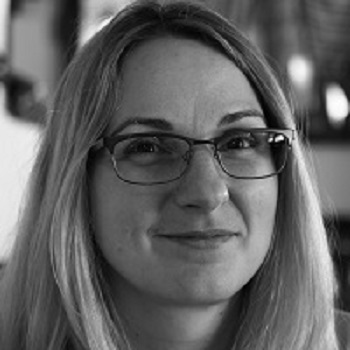
Krisztina Nagy
Redatora Técnica
Feedzai
-
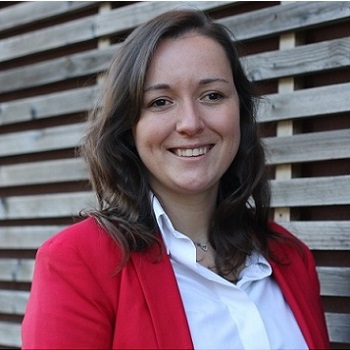
Sara Duarte
Comunicadora Técnica
Feedzai
-
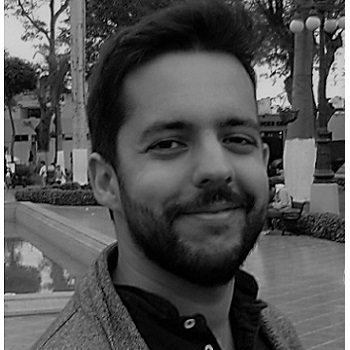
Nuno Grazina
GESTOR DE CONHECIMENTO TÉCNICO - Feedzai
-
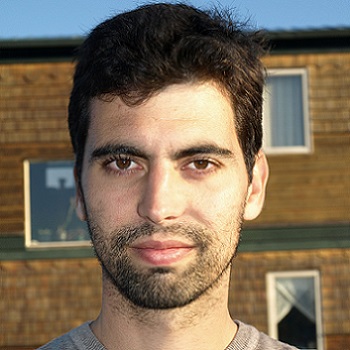
Luís Melo
Comunicador Técnico
Feedzai
-
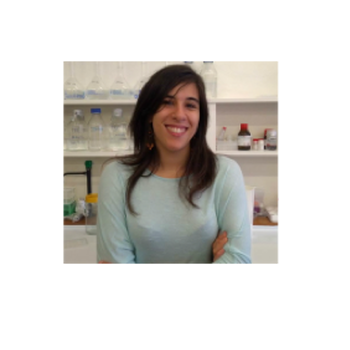
Rita Francisco
DOUTORANDA UNL
EUPATI
Nelson Zagalo
Nelson Zagalo é Professor Associado do Departmento de Communicação e Artes, com mais de 15 anos de experiência em investigação.
Constituiu o Laboratório engageLab, enquanto esteve na Universidade do Minho em 2009, e fundou a Sociedade Portuguesa de Videojogos também em 2009.
Tem mais de cem publicações revistas nas áreas de jogos e interação humano-computador. Foi consultor technológico e científico para empresas, europeias e programas com fundos nacionais, e acreditação de cursos do ensino superior.
É editor do blog Ilusão Virtual, e publicou os livros "Emoções Interactivas, dos Filmes aos Videojogos" (2009), “Videojogos em Portugal: História, Tecnologia e Arte” (2013), e "Criatividade na Era Digital" (2015).
Ana Rita Remígio
Ana Rita Remígio é Comunicadora Técnica para os Sistemas de Segurança na Bosch Building Technologies. É responsável pela criação e manutenção da documentação técnica, incluindo gestão de tradução para 45 línguas.
Ana Rita têm um Doutoramento em Terminologia e uma Pós-graduação em Tradução Assistida por Computador. A sua formação comtempla também contacto próximo com as áreas técnicas: trabalhou, durante mais de 8 anos, nas áreas de transferência de tecnologias e propriedade industrial, encontrando-se regularmente com inventores, professores, pesquisadores e CEOs.
É a Vice-Presidente da APCOMTEC.
Ana Oliveira
Ana Oliveira é Inspetora Chefe na Autoridade de Segurança Alimentar e Económica. Entre 2001 e 2005 trabalhou no departamento de informação, documentação e relações públicas da Direção Geral de Inspeção e Controlo da Qualidade Alimentar.
Desde 2006 trabalha na área da informação pública da Autoridade de Segurança Alimentar e Económica (ASAE), detém ainda a coordenação da análise de todas as denúncias e reclamações recebidas na ASAE (segurança económica e alimentar). É responsável pela promoção e divulgação de informação relacionada com a esfera de atuação (atividade de fiscalização, resultados operacionais, informação geral para associações empresariais, operadores económicos e consumidores). É responsável pelo contactos com os órgãos de comunicação social e preparação de materiais de divulgação (vídeos, apresentações, flyer) sobre a atividade da Autoridade de Segurança Alimentar e Económica. É ainda responsável pelo website da ASAE e pela página nas redes sociais.
Desde 2008 é a editora ASAEnews – uma publicação periódica sobre a atividade da ASAE orientada para a informação dos consumidores, operadores económicos, jornalistas e outras entidades oficiais.
António Oliveira
Responsabilidades atuais: Representante Oficial Nacional da Nokia Portugal, Gestor da Qualidade de Cliente, Unidade do Mercado da Europa Central, Ásia Central e Mediterrâneo.
Academia: Engenharia Electrónica e de Telecomunicações (1981), Pós-graduação em Engenharia de Qualidade (1989)
Atividade empresarial: Mais de 30 anos de experiência no sector das Telecomunicações em empresas como a Siemens e, desde 2007, na Nokia.
Envolvimento Associativo: Participante ativo enquanto membro do quadro nas Associações de Telecomunicações e de Qualidade Nacional ao longo das duas últimas décadas (APQ, CEQUAL, APDC, APCER, COTEC).
Zhihua Hu
Doutorando em Tradução e Terminologia pela Universidade de Aveiro e a Universidade Nova de Lisboa.
É mestre em Língua e Literatura Europeia (Língua Portuguesa) pela Universidade de Estudos Internacionais de Xian na China.
Foi tradutor-engenheiro numa empresa estatal na área elétrica da China, responsável pela tradução e elaboração dos documentos técnicos.
As suas principais áreas de investigação são: tradução com base num corpus; teorias tradutórias; escrita técnica; estudos terminológicos; linguística contrastiva.
Miguel Gonçalves
Miguel Gonçalves é fundador e gestor da E-goi, a plataforma de marketing automation multicanal, um SaaS B2B de Matosinhos para o mundo, dedicado à comunicação digital e de marketing e que integra Email, SMS, IVR, Push mobile, Web Push, Landing pages, Formulários e Redes Sociais.
A E¬goi tem cerca de 70 pessoas a colaborar, e prevê facturar cerca de 10 Milhões de euros em 2018 e conta com dezenas de milhares de utilizadores activos.
Estudou gestão de Marketing no IPAM em Matosinhos, e Engenharia electrotécnica e de computadores na Faculdade de Engenharia do Porto.
Rute Costa
Rute Costa tem experiência contínua em estratégia, gestão de produto e gestão de projeto, nomeadamente em tecnologia e-commerce, websites, aplicações de telemóvel e serviços cloud.
Anteriormente à Farfetch, trabalhou no Grupo Pestana como Diretora de E-commerce, e na Portugal Telecom, onde teve diferentes posições ao longo de mais de dez anos, desempenhando um papel crucial em várias equipas de gestão do produto da empresa.
Rute Costa possui um Mestrado em Economia, e um MBA pela Nova School of Business and Economics em Lisboa, onde construiu uma tese sobre Comportamento Estratégico e Organizacional.
Luís Salema
Luís Salema é professor de português, latim e grego com 20 anos de experiência. Exerceu atividade docente em várias escolas do ensino secundário, na Universidade do Algarve e na Universidade Aberta. No ensino superior, lecionou unidades curriculares nas áreas da língua e cultura portuguesas, da organização da documentação em bibliotecas e das ferramentas de comunicação educacional multimédia. Atualmente, exerce funções no Camões, Instituto da Cooperação e da Língua, na Divisão de Programação, Formação e Certificação.
Doutorando em Tradução e Terminologia, pela Universidade de Aveiro e pela Universidade Nova de Lisboa, desenvolve um projeto que alia a terminologia e a comunicação técnica, na área da meteorologia, com a colaboração do IPMA - Instituto Português do Mar e da Atmosfera.
É mestre na área da linguística e pós-graduado em gestão da informação e bibliotecas escolares.
As suas principais áreas de investigação são a variação linguística, a terminologia e a comunicação técnica.
João Marques
João Marques tem background académico nas áreas das Tecnologias da Comunicação e Medias Interativos, assim como em Informática Médica.
Tem experiência profissional na área de experiência de Cliente e de Utilizador, medias digitais e marketing aplicado a diversas indústrias: ensino, retalho & distribuição, saúde e telecomunicações.
Atualmente, trabalha como Especialista na Documentação para Cliente na Nokia, e é membro de grupos de trabalho de Voz do Cliente e Comunicação.
João é um futurista, tendo paixão pelo mundo do digital. Ele está sempre a tentar encontrar soluções disruptivas e novas abordagens para fazer a transformação digital nas empresas, na sociedade, e acima de tudo no que toca à relação das empresas com o utilizador/cliente, incluindo conceitos como a realidade aumentada e virtual e a gamification.
Cláudia Santos
Cláudia Santos é Líder de Equipa, Especialista em Comunicação e Redatora Técnica na Nokia.
Começou a trabalhar na Nokia em 2007 como redatora técnica na área de hardware. Posteriormente, mudou para o software, e tem trabalhado como Gestora de Projeto de Documentação de Cliente em diversos projetos localizados em diferentes países. Cláudia trabalhou com equipas um pouco por todo o mundo: Finlândia, Alemanha, Índia, EUA, Polónia, Hungria, Portugal, entre outros.
Participou também em vários grupos de trabalho, sendo uma contribuidora ativa para o Guia de Estilo da área da Nokia Software Technical Communications. Atualmente, é Gestora de Projeto do grupo de trabalho Voz do Cliente.
Cláudia tem um Mestrado em Tradução Técnica e Terminologia pela Universidade of Aveiro.
Denise Branco
Denise Branco é uma Professora de Línguas experiente, possui um Mestrado em Linguística com especialização em Inglês para Fins Específicos, e está atualmente a redigir a sua tese de Doutoramento em Tradução e Terminologia, focando-se especialmente no papel da tradução e da interpretação na transferência de conhecimento técnico e científico.
Após lecionar durante cerca de dez anos na Universidade de Aveiro Inglês e Português para Fins Específicos, fundou em 2007 a sua empresa de serviços linguísticos. Desde então, tem trabalhado com a indústria internacional e com órgãos governamentais na área da comunicação técnica e científica, na área da segurança e proteção nuclear.
Krisztina Nagy
Krisztina é Redatora Técnica na Feedzai.
Desde os seus estudos em programação, tem trabalhado em várias empresas líderes de mercado tais como a Microsoft, a OutSystems e a Vision-Box. Nestas empresas, para além de ganhar uma visão geral de como a informação flui dentro das corporações, aprendeu os detalhes da Comunicação Técnica e teve oportunidade de se envolver também na área da Experiência de Utilizador.
Sara Duarte
Sara Duarte é Licenciada em Tradução e Mestre em Tradução Especializada em Ciências Jurídicas pela Universidade de Aveiro.
Começou o seu percurso profissional enquanto Tradutora numa start-up cuja missão visava o desenvolvimento de uma plataforma de comércio online para empresas. Durante essa experiência, e com o constante evoluir das necessidades do projeto, esteve na essência da criação da Comunicação Técnica dentro da empresa, posição que desempenhou durante cerca de 4 anos.
Atualmente trabalha como Comunicadora Técnica na Feedzai.
Nuno Grazina
Nuno Grazina é formado em Engenharia de Software, mas nunca foi um grande programador, por isso começou a desenvolver uma carreira em Comunicação Técnica em 2011.
Tendo aprendido como transformar conceitos complexos em explicações simples, tem aplicado esse conhecimento à documentação de software desde os detalhes técnicos de baixo nível até ao design da solução e ao suporte comercial.
Atualmente, lidera todas as iniciativas de conhecimento técnico na Feedzai. A equipa de Comunicação Técnica entrega documentos para diversos componentes e soluções, assim como todo o programa de formação técnica.
Luís Melo
Luis tem um Mestrado em Engenharia Física pela Universidade de Aveiro, e um doutoramento em Engenharia Mecânica pela Universidade de Victoria, Canadá. Liderou pesquisas sobre sensores de fibra óptica para detecção de espécies químicas.
A sua missão na área de sensores terminou e, por isso, mudou o curso da sua carreira e começou a trabalhar em empresas de software. Começou na Accenture como programador e depois encontrou uma nova paixão pela comunicação técnica na Feedzai.
A sua maior motivação é conectar a escrita técnica a outros campos, tais como o design, experiência do utilizador, interação com o utilizador e encontrar novas maneiras de comunicar conceitos técnicos ao público-alvo.
Rita Francisco
Rita Francisco tem um Mestrado em Genética Molecular pela Universidade do Minho. Atualmente é doutoranda, focando-se em compreender melhor os pacientes com afecção imunológica em Transtornos Congénitos da Glicosilação (CDG). O seu trabalho é desenvolvido com maior ênfase na rede de investigação conduzida pelo paciente (CDG & Allies – Professionals and Patient Associations International Network (CDG & Allies – PPAIN, http://www.researchcdg.com/). Rita é também voluntária na Associação Portuguesa para a CDG (APCDG, http://www.apcdg.com), onde é responsável pela defesa do paciente.
Atualmente, é uma das formandas da 3ª edição do Curso Europeu de Formação Especializada EUPATI e é voluntária na EUPATI Portugal.
Filiação: UCIBIO, Faculdade NOVA de Lisboa; CDG & Allies - Professionals and Patient Associations International Network (CDG & Allies -PPAIN); The Portuguese Association for CDG; EUPATI Portugal
PROGRAMA
O nosso programa de dois dias
09.00
09.15
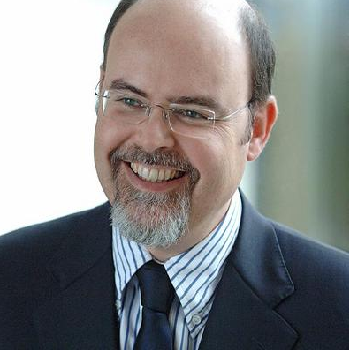
Head of Region Sales Management - Nokia
João Picoito
20mins
About João
Iniciou a sua carreira profissional na Alcatel em 1987, tendo mudado para a Siemens AG em Munique onde foi responsável pela área de Communication Protocol Design e Network Planning. Atualmente é Head of Region Sales Management.

DIRETOR - INFOTERM
Christian Galinski
Usually the voice of the customer is heard, when they complain. If they complain in masses, immediate action has to be taken in order to avoid big losses in terms of returns to be refunded, administration workload of handling complaints, legal issues involved, coordination efforts with distributors – ultimately loss of user trust. Increasingly technical documentation (on various media – more and more multilingual) has a decisive function with respect to user satisfaction. In this connection, texts may be micro-texts (such as SMS) or technical manuals, user manuals, etc. Content consistency throughout texts whether written or spoken (e.g. used in hotlines) is crucial between the languages and within each language (not to mention language varieties). How to ensure text quality across languages and media? More than beautiful prose, microcontent entities must be managed in a proper way. Given the fact that same or similar microcontent entities are used all over texts in industry related to products or services, its consistency throughout the enterprise facilitates communication, improves the quality of texts, may reduce legal issues and potentially enhances customer satisfaction. Properly managed information-enriched microcontent entities based on methodology standards may turn out to be less costly in the long run. Furthermore, legal requirements for the protection of customers are getting tougher, intellectual and industrial property rights may be looming. The presentation will discuss various approaches and new standardization efforts that have an impact on technical communication and technical documentation in industry.
45mins
Sobre Christian
É o autor de muitas publicações no campo da terminologia e áreas relacionadas, incluindo diferentes tipos de conteúdo estruturado e o seu papel no Negócio electrónico e Comércio electrónico.
10.50
11.15

FUNDADOR E GESTOR - E-Goi
Miguel Gonçalves
Como um SaaS com muitos milhares de clientes à distância, gere os desafios de tentar superar as suas expectativas para os satisfazer. Algumas estórias e exemplos de como a E-goi tenta perceber a razão e forma de melhorar desempenhos de experimentação, conversão, desistência ou insatisfação.
Sendo a missão da E-goi, a criação de ferramentas para que as marcas entendam e comuniquem melhor com os seus públicos e clientes, que soluções é que está a desenvolver? A comunicação multicanal e bidireccional é essencial, mas a automatização de processos também o é, sendo a inteligência artificial a peça que faltava para unir e potenciar ainda mais estas duas funções.
30 mins
Sobre Miguel
Miguel estudou gestão de Marketing no IPAM em Matosinhos, e Engenharia electrotécnica e de computadores na Faculdade de Engenharia do Porto.

COMUNICADORA TÉCNICA - Bosch Building Technologies
Ana Rita Remígio
Strengthening customer identity: one look one feel approach to 4.0 technical communication in a global multi-product company
Building and maintaining customer identity is key in business success and goes beyond branding. Technical documentation plays a crucial – yet many times apparently silent – role in the trust bond between a company and its customers. Documentation supports the product and guarantees its installation and use to the fullest extend. However it is not just about consistency in communicating. It is also about having the right information at the right place and at the right time.
Bosch Building Technologies offers solutions for security and safety systems, including video surveillance, intrusion detection, fire detection and voice evacuation systems, as well as access control and management systems, professional audio and conference systems. Adding to different products from different business units, at different locations and with different stakeholders, are different brands – such as Dynacord, Electro-Voice, RTS and Telex – and partner brands, like Sony, for video security. In this scenario, strengthening customer identity becomes challenging.
Less than one year ago a multidisciplinary team was created in Ovar, with the aim of developing and applying a one look one feel approach to technical communication for Bosch Building Technologies. This approach implies not only rethinking the way of working of a global team of technical communicators, but also developing standards for writing, terminology, and design and for information management and modelling, and leads the way to Technical Communication 4.0.
We know that information consumption is changing. Alike demand for smart factories and global digitalization brought about by Industry 4.0, our customers demand and expect granular and tailor-made access to content. This is why we built our business model on a strategy for dynamic content delivery, via intelligent information: information that is modularized, enriched with metadata, and framed within a standardized knowledge structure.
And this is when all dots connect and we place documentation alongside packaging, labelling and training, having teams working together and offering a complete and unique product-related solution to our customers.
30mins
Sobre Ana Rita
Ana Rita Remígio é Comunicadora Técnica para os Sistemas de Segurança na Bosch Building Technologies. É responsável pela criação e manutenção da documentação técnica, incluindo gestão de tradução para 45 línguas.
12.15

Doutorando - UA AND UNL
Zhihua Hu
A Análise de Rótulos de Champô nas Versões Portuguesa e Chinesa: a divergência de prioridades em Comunicação Técnica
O rótulo de produto constitui uma designação coletiva adotada para indicar várias formulações e instruções sobre os produtos; concretamente, os rótulos são compostos por informação variada: nome do produto, local de produção, nome e localização da empresa produtora, os principais componentes do produto, as especificações e referências, bem como a data de produção, o prazo de validade e os avisos. Os rótulos podem ser indicados nos produtos ou nas embalagens dos produtos e podem integrar textos, símbolos, números, figuras ou outras descrições. O conteúdo da rotulagem deve estar em conformidade com os requisitos das normas nacionais.
Tem havido atenção generalizadora e crescente na análise de rótulos, dado que, por um lado, os rótulos configuram um género de documento técnico, já que através dos rótulos pode-se obter informações relevantes sobre os produtos; por outro lado, as informações contidas nos rótulos auxiliam os consumidores a tomar decisões no processo da compra, incorporando elementos de marketing.
Através deste trabalho, pretendemos analisar os conteúdos da rotulagem, na versão portuguesa e na chinesa, do champô da marca Head & Shoulders da empresa americana Procter & Gamble. Tendo em conta que os conteúdos informativos são um dos principais elementos da comunicação técnica e, por este motivo, seja expectável que haja uma abordagem transnacional e semelhante na elaboração dos rótulos para os dois países, iremos analisar a escolha das informações indicadas na rotulagem em ambas as versões, tentando explicar quais os fatores que podem levar a diferenças nas escolhas incluídas em cada um dos rótulos.
30mins
Sobre Zhihua
Doutorando em Tradução e Terminologia pela Universidade de Aveiro e a Universidade Nova de Lisboa. As suas principais áreas de investigação são: tradução com base num corpus; teorias tradutórias; escrita técnica; estudos terminológicos; linguística contrastiva.
12.45
14.30

ESPECIALISTA EM DOCUMENTAÇÃO DE CLIENTE - Nokia
Naoko Ito
Naoko is going to talk about some practices to get feedback from different types of “customers” in Technical Communication in Nokia. In Nokia, Technical Communication teams dedicate to the creation and publication of customer documentation. For Technical Communication teams, all stakeholders can be considered as customers, including development teams, testing teams, customer support teams, and external customers, that is, users of software products.
Development teams use a service of Technical Communication teams to document features they develop. They provide inputs for new or updated features and review drafted documentation. Testing teams test features according to the documentation. They report bugs if a feature does not work as it is described in the documentation. It may be a bug of software or a bug of documentation. Customer support teams perform administrative operations and troubleshoot problems on behalf of external customers. They report bugs if the documented steps do not work or the information necessary to perform troubleshoot is missing. External customers use a software product daily bases for operations. They ask for help from a customer support team, which then may report a bug of documentation. All those different types of customer feedback are valuable to have a better quality of documentation from different perspectives, while interactions happen at different stages in different ways.
During the session, she is going to share how Technical Communication teams in Nokia proactively interact with different stakeholders in the process of creating and publishing customer documentation. She also gives a glimpse of Voice of Customer working group in Technical Communication. Can some of the practices, efforts and experiences be adopted to your work as a Technical Communication team or your work with Technical Communication teams in your product?
45mins
Sobre Naoko
Naoko Ito é Especialista em Documentação de Cliente na NOKIA, trabalhando também como Gestora de Projeto e especialista de documentação no grupo de trabalho 'Voz do Cliente'.
15.30

INSPECTORA CHEFE - ASAE
Ana Oliveira
ASAE: Reforço da marca ou (re)modelação da imagem
A estratégia de comunicação seguida na Autoridade de Segurança Alimentar e Económica (ASAE), visa partilhar e transmitir informação sobre a sua atividade, com transparência, idoneidade e rigor nas suas áreas de atuação. Esta informação centraliza-se na transmissão dos resultados operacionais obtidos no âmbito das suas ações de fiscalização e inspeção, na vertente de avaliação e comunicação de riscos ou ainda em de protocolos de cooperação ou projetos de disseminação do conhecimento numa vertente preventiva.
Diariamente, a ASAE recorre a uma diversidade de meios para transmitir informação relativamente à sua atividade, utilizando texto escrito ou imagem (fotografia ou vídeo) recorrendo à sua disponibilização via internet (website da ASAE), newsletter, página nas redes sociais, comunicados de imprensa e/ou através de projetos temáticos específicos favorecendo a proximidade entre os interlocutores sem descurar a diferenciação dos públicos-alvo a atingir, sejam eles, consumidores, operadores económicos, Associações de Setor, órgãos de comunicação social, entidades congéneres ou, até mesmo, outras entidades oficiais nacionais ou estrangeiras.
Será abordada a forma como o modo de comunicar tem ajudado a mudar perceções e, no caso da ASAE, a mudar o paradigma de marca institucional tendo por base as prioridades estratégicas da ASAE, de atuação/intervenção ativa no âmbito das suas competências de fiscalização bem como desenvolvimento de ações de sensibilização/formação quer de consumidores quer de operadores económicos.
Irá ainda ser efetuada uma breve abordagem sobre a relevância de estar atento às várias fontes abertas disponíveis constituindo um verdadeiro desafio para os responsáveis pela gestão da área da comunicação devido à sua enorme influência e visibilidade junto dos consumidores, bem como partilhar a perceção de notoriedade da ASAE enquanto Autoridade de fiscalização, órgão de polícia criminal e entidade competente pela avaliação e comunicação de riscos.
A lógica passa, por um lado, informar, sensibilizar, no sentido de prevenir o incumprimento, sem, contudo, deixar de cumprir o seu papel de Autoridade de fiscalização de mercado. A tendência das instituições públicas, no futuro, será de uma comunicação mais próxima do indivíduo, estreitando as barreiras existentes entre os utilizadores e as Instituições.
Espera-se poder partilhar a experiência de trabalho na área da comunicação numa Organização dinâmica como a ASAE sendo este um desafio constante marcado pela imprevisibilidade dos resultados obtidos.
30mins
Sobre Ana
Trabalha na área da informação pública da ASAE, e detém ainda a coordenação da análise de todas as denúncias e reclamações recebidas. É responsável pela promoção e divulgação de informação relacionada com a esfera de atuação.
16.00

Redator Técnico - Feedzai
Luís Melo
Technical communication in a fast-growing company
Whether your work in a company, university or any other institution, there is a question that occasionally comes to our minds- how does someone’s job with a similar role than mine looks like in other places?
The goal of this talk is to share my personal experience of working in the area of technical communication. I will walk you through an example of a typical day at Feedzai covering the role, importance, and challenges of this topic in a company that is changing and growing fast.
Technical communication might differ not only between organizations but also between teams inside the same organization. Each team might have distinct working methods and tools, as well as different perceptions of documentation. Just like the variety within a culture is what makes it stronger and more vibrant, the different documentation perceptions should be leveraged to make it reacher and more complete. The message and tone that a company speaks out should unify the different viewpoints.
On the other hand, there are also transversal aspects between different companies as well as between industry and academia. From my point of view, there is often an unfair necessity to separate the work that is performed by the industry and academia. Sometimes, the skills that one gain in each context is not perceived as equally valuable skills from one to the other. During this presentation, I will compare these two different contexts and point out the aspects that I believe to be closely related.
You can expect to be challenged with a personal point of view on how technical communication plays a critical role whether we work in a company or a university because at the end of the day there is a common goal: share our knowledge.
30mins
Sobre Luís
A sua maior motivação é conectar a escrita técnica a outros campos, tais como o design, experiência do utilizador, interação com o utilizador e encontrar novas maneiras de comunicar conceitos técnicos ao público-alvo.
16.45

DOCENTE E INVESTIGADOR - CAMÕES INSTITUTE
Luís Salema
Previsões meteorológicas e meios de comunicação: multimodalidade e diversidade de utilizadores
O acesso às previsões meteorológicas sofreu uma mudança significativa nos últimos anos. Os meios tradicionais, como a televisão ou os jornais, deixaram de ser os únicos a transmitir previsões meteorológicas e as plataformas digitais são cada vez mais utilizadas.
Neste trabalho, lança-se um olhar sobre as previsões meteorológicas transmitidas pelo serviço público de meteorologia, em Portugal. Como são difundidas essas previsões a diferentes utilizadores? Que meios de comunicação têm à sua disposição para aceder às previsões meteorológicas? Que recursos são utilizados?
A comunicação tem como objetivo analisar de que forma o Instituto Português do Mar e da Atmosfera, I. P. (IPMA), apresenta as previsões meteorológicas, considerando as orientações da Organização Meteorológica Mundial, os dados recolhidos de vários canais de comunicação do IPMA e investigação produzida no âmbito da relação existente entre os media e a difusão da informação/previsão meteorológica. Pretende-se estudar i) os diferentes canais utilizados pela população e ii) a complementaridade existente entre o texto linguisticamente codificado e a imagem.
O estudo realizado mostra que o IPMA recorre a uma diversidade de meios para transmitir previsões meteorológicas, utilizando diversos produtos que combinam o texto escrito e a imagem. Entre os principais meios e recursos utilizados destacam-se:
- parcerias com a RTP para a transmissão das previsões;
- disponibilização de conteúdos nas redes sociais;
- aplicações para dispositivos móveis;
- serviços disponibilizados via internet (portal do IPMA, subscrição de serviços de previsão via correio eletrónico);
- previsões meteorológicas para utilizadores específicos (aeronáutica, agricultura, atividades marítimas).
Através do mapeamento da situação existente, será possível perspetivar o desenvolvimento de produtos de comunicação técnica capazes de melhorar a relação existente entre os serviços de meteorologia e os seus utilizadores, domínio que não tem sido muito explorado no nosso país.
30mins
Sobre Luís
Doutorando em Tradução e Terminologia, pela Universidade de Aveiro e pela Universidade Nova de Lisboa, desenvolve um projeto que alia a terminologia e a comunicação técnica, na área da meteorologia, com a colaboração do IPMA - Instituto Português do Mar e da Atmosfera.

PROFESSOR Associado - UNIVERSIdade de AVEIRO
Nelson Zagalo
Gamification has become one of the key strategies to persuade persons to work and learn in multiple professional environments, from health to education, from managing to company training, from tourism tours to just running the mile. We'll discuss why gamification is so appealing, and what stands beneath the game that really makes persons move and act.
30mins
Sobre Nelson
Tem mais de cem publicações revistas nas áreas de jogos e interação humano-computador. Foi consultor technológico e científico para empresas, europeias e programas com fundos nacionais, e acreditação de cursos do ensino superior.
20.30
09.45

DIRETOR DA PROTOTIPAGEM DE ASSISTÊNCIA AO UTILIZADOR - SAP IRELAND
Jody Byrne
Storm Clouds with Silver Linings? The Challenges Facing Technical Communication 4.0
The steady stream of technological advances which are emerging, in part, thanks to Machine Learning and Artificial Intelligence, means there is plenty of reason to worry about the future of Technical Communication. This affects us not just in terms of relevance and job security, but also regarding how we train new communicators.
Combined with increased emphasis on improving User Experience to develop hyperintuitive products that need minimal help content, one would be forgiven for thinking that the journey to the Cloud is nothing more than the beginning of the end for Technical Communication.
In this talk, we will explore some examples which, at first glance, seem to suggest that Technical Communication is indeed doomed. But within these examples we can find tantalizing glimpses of what the future holds for Technical Communication which suggest that there are plenty of exciting and unexpected opportunities in store.
45mins
Sobre Jody
Jody Byrne é um profissional de comunicação técnica com 20 anos de experiência como tradutor técnico, autor, professor, produtor de vídeo e consultor de assistência ao utilizador (AU). É o diretor do Laboratório de Prototipagem de Assistência ao Utilizador, que pesquisa e desenvolve novas formas de comunicar informação técnica.
10.50
11.15

DIRETORA DE PRODUTO - Farfetch
Rute Costa
Farfetch finds critical to have a customer-centric approach to product development. To achieve this goal the company aims to have all product hypotheses supported by qualitative or quantitative research data, as well as having most of the product iterations launched using experimentation techniques.
We believe that by doing this, the teams will make sure that the customer’s journey will improve. This presentation aims to showcase some of the techniques used in Product development at Farfetch to guaranty world-class fashion.
30mins
Sobre Rute
Rute Costa tem experiência contínua em estratégia, gestão de produto e gestão de projeto, nomeadamente em tecnologia e-commerce, websites, aplicações de telemóvel e serviços cloud.
11.45

GESTOR DA QUALIDADE DE CLIENTE - Nokia
António Oliveira
Driving the Voice of Customer
Listening to voice of the customer is not enough – companies need to do much more than simply trying to know what customer thinks about a supplier. However between a declaration of intentions and a structured and effective approach there is a huge path to walk. During the presentation current practices will be addressed, in particular Nokia’s approach will be used to exemplify how suppliers are able not only to know but as well to start predicting how their customers will behave in the near future.
Bringing concrete insights from customer feedback into supplier’s management and key organization units, is as crucial as closing the loop with the customer in order to make sure that not only customer recognizes the efforts made to address their concerns but as well they acknowledge our improvement plans address it and were effectively implemented. From listening the Voice of the Customer to Driving the Voice of Customer – a change of paradigm any supplier, from business-to-consumer to business-to-business sectors, need to do.
30mins
Sobre António
As suas Responsabilidades atuais: Representante Oficial Nacional da Nokia Portugal, Gestor da Qualidade de Cliente, Unidade do Mercado da Europa Central, Ásia Central e Mediterrâneo. É um participante ativo enquanto membro do quadro nas Associações de Telecomunicações e de Qualidade Nacional ao longo das duas últimas décadas (APQ, CEQUAL, APDC, APCER, COTEC).
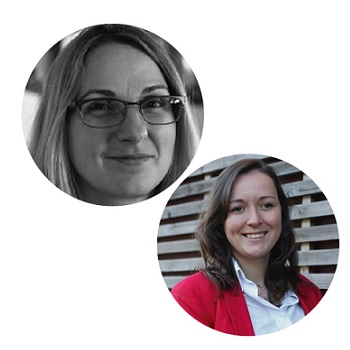
REDATORA TÉCNICA e COMUNICADORA TÉCNICA - FEEDZAI
Krisztina Nagy e Sara Duarte
Building bridges for a documentation team
At the beginning of the life cycle of a tech company communication is easy. The company is small, everyone talks to one another, the product is simple. As the product and the company grows, teams split up and specialise, and they segregate knowledge. Silos are built, but usually the necessary communication channels between them are missing until some major communication failure calls attention to the problem.
There are numerous communication needs between the different teams. Companies have to have a well-planned communication infrastructure to make the right information flow to the right audience at the right time and in the right form. The communication infrastructure has to empower and activate all the different stakeholders, needs to build different channels, and create the processes and rules that regulate their usage.
Those channels and processes are highly influenced by a large set of factors. Some may be obvious, but most of them are hidden or their impact is tricky to judge. For instance, communication technologies (high throughput network, software for video calls and chat, ERP and ticketing systems, etc.) seem to be obvious facilitators of communication, but they only build the backbone of the channels. Without structured processes and rules (who should use them for what, when and how) these channels may contribute to augmenting the chaos.
Which groups and key persons are the stakeholders of technical documentation? What are their roles? How do they interact in the different roles with different teams, different technical backgrounds, across time zones, while juggling simultaneous projects?
We will look at some real-life examples to see that there is no one-size-fits-all solution, and how the documentation team needs to adjust to the company growth.
30mins
Sobre Krisztina
Desde os seus estudos em programação, tem trabalhado em várias empresas líderes de mercado tais como a Microsoft, a OutSystems e a Vision-Box.
Sobre Sara
Começou o seu percurso profissional enquanto Tradutora numa start-up cuja missão visava o desenvolvimento de uma plataforma de comércio online para empresas.
12.45
14.30

PROFESSOR CATEDRÁTICO - UNL
António Câmara
Augmenting Reality, a New Voice for Customers
We live in a Real World but the Internet has been developed mostly in the Digital World. Augmented Reality (AR) provides the bridge between the Real and Digital Worlds.
This bridge will be implemented via digital layers. These layers will be digital twins of real places, objects, and activities. They may be also new virtual location-based experiences. The result will be a new Internet of Everything (IoE) where the Augmented World (AW) will be our new browser.
In this new browser, customers will find a new voice as there will be two-way communication channels to interact with brand owners. They will also find new digital spaces to interact with other customers for every existing place, object and activity. Those spaces may be location based virtual post-its accessed via smartphones or AR glasses, or simply the new AW browser on the desktop.
Customers become owners after purchase transactions. The sharing platforms turns these new owners into potential renters of places (i.e., Airbnb) and objects (i.e., Slock.it). The AW browser will facilitate both the purchasing and sharing stages.
AR glasses are foreseen to hit the consumer market in three years. They will accelerate these ongoing developments made possible with the growing smartphone capabilities. But their impact will be mostly felt through the new experiences that they will enable. These experiences will surprise, delight and be useful for the individual consumer. They will also open the possibility to create new conversational environments for customers based on semi-holographic imaging and artificial intelligence.
The experience gained in hundreds of YDreams projects, developed in thirty countries for 50 Fortune 500 companie,s will be used for illustrative purposes. Current research at the New University of Lisbon, as well as new Aromni developments, will be also reported to anchor future visions.
45mins
Sobre António
António Câmara foi pioneiro na investigação de simulação, sistemas de informação geográfica, realidade virtual e aumentada. Foi co-fundador da YDreams Global, Azorean, Ynvisible, The Inventors e Aromni. António Câmara recebeu mais de vinte prémios nacionais e internacionais, destacando-se o Prémio Pessoa em 2006, e uma das Entrepreneurs of the Year Awards da União Europeia em 2008.
15.30

DOUTORANDA UNL - EUPATI
Rita Francisco
Moving from talking to patients to talking with patients
Patient involvement,patient/clinician shared decision-making, patient empowerment, patient-centricity are all concepts illustrative of the new paradigm that both research and medicine have been experiencing.
Contrarily to what has already been seen in many other areas of knowledge and services, the patients view about their health has often been disregarded with clinicians and researchers taking the driver's seat and being the sole decision-makers. This is changing. The patient perspective is being perceived as valuable, useful and unique. But, giving voice to patients implies (or should always imply) education, reliable and accessible information, and empowerment. This new era is riddled with communication challenges and opportunities.
This presentation will explore 2 case studies of institutions and projects developing ambitious strategies to make patient participation more efficient and informed.
30mins
Sobre Rita
Atualmente é doutoranda, focando-se em compreender melhor os pacientes com afecção imunológica em Transtornos Congénitos da Glicosilação (CDG). Rita é também voluntária na Associação Portuguesa para a CDG, onde é responsável pela defesa do paciente.
16.00

GESTOR DE CONHECIMENTO TÉCNICO - Feedzai
Nuno Grazina
Growing a Technical Documentation team the right way with the right technical challenge
Finding skilled Technical Writers is hard. Finding that excellent Tech Writer that fits your team and your company might seem impossible. There are so many variables at play that when you need to bring new members to a Technical Documentation team, you must carefully consider what you need to evaluate to detect the best candidates. Otherwise you will either miss your target by looking at it from a very narrow perspective or by obtaining too many unfocused data points.
Designing a technical challenge for Technical Writers that makes sense in your particular context should not just be about writing. It will most likely try to emulate a real scenario, have the candidate understand the problem, ask questions, look for information and only then propose a written solution. There will also be a healthy dose of ambiguity during the challenge, as the perfect world where the problem is crystal clear and all information is available does not exist.
Even if all these factors are intentionally tested, there’s a chance that the final decision is not straightforward, as a candidate that looks very skilled on paper might fail big or a candidate that delivers a good written challenge might not take feedback well or not fit your culture in other ways. It doesn’t mean they are bad, it just means they are not the person you are looking for at that particular moment.
This presentation will provide a personal and professional account of the author both as a hiring manager and as a candidate in Technical Writing roles. It will discuss how the sum of those experiences influenced different approaches, enabled best practices and caused several failures along the way while building the Tech Comm team at Feedzai.
30mins
Sobre Nuno
Atualmente, lidera todas as iniciativas de conhecimento técnico na Feedzai. A equipa de Comunicação Técnica entrega documentos para diversos componentes e soluções, assim como todo o programa de formação técnica.
16.45

Doutoranda - UA AND UNL
Denise Branco
Needs Analysis: Safety and Security and the technical translation of emotions
This study presents a new approach to needs analysis based on Integral Theory and the AQAL map (all quadrants, all levels, all lines, all states and all types) and focuses on technical texts that need to meet not only technical and scientific requirements but also emotional requirements in order to fulfill their ultimate goal. Such texts emanate from the political decisions made by sovereign member states within international multilingual and multicultural technical and scientific organizations and their supporting agencies which come together based on mutual and collaborative interests.
Given the complexity and tension of current international relations, this work argues in favor of a more complex needs analysis tool which is capable of identifying the non-linguistic variables that impact on the reception of technical and scientific information and the implementation of international standards and procedures which aim at safeguarding the peaceful use of nuclear energy and nuclear technologies.
The challenges of translating the terms “safety and security” are analyzed and discussed from the AQAL map perspective and quadrant based communication needs analysis is presented to illustrate how the decision-making process for the translator can be more informed by taking into account the societal and cultural dimensions in which the terms occur and are expected to perform.
By highlighting the importance of needs analysis, this research argues in favor of its role as an essential stage of technical documentation design and also as a requirement for technical translation purposes. Needs, wants and lacks and the gaps that need to be bridged according to the social and cultural contexts in which a text will perform are essential for the collaborative encounter between technical and scientific worldviews and the emotional dimension of collective identities and realities.
30mins
Sobre Denise
Após lecionar durante cerca de dez anos na Universidade de Aveiro Inglês e Português para Fins Específicos, fundou em 2007 a sua empresa de serviços linguísticos. Desde então, tem trabalhado com a indústria internacional e com órgãos governamentais na área da comunicação técnica e científica, na área da segurança e proteção nuclear.
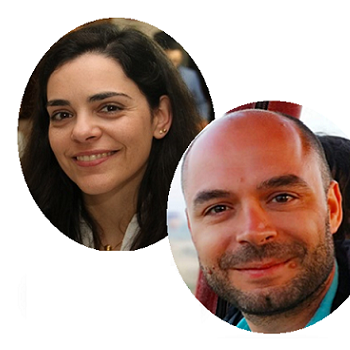
Especialistas em Comunicação - Nokia
Cláudia Santos e João Marques
Customer Experience: the future of Nokia documentation delivery formats using rich media, gamification and augmented reality
Documentation is not only about what is written by the technical writers. The way it is delivered is as important as the content being delivered. It is said to “don't judge a book by its cover", but a good cover on a great book, makes it even better and more appealing.
Having this in mind, Nokia Customer Documentation group is focused not only in producing documentation with quality, but is also focused on the way it is delivered.
Therefore, Nokia is researching for new ways of presenting and delivering content to satisfy customer expectations, and new ways of creating added value for the company, namely through rich media, gamification, and augmented reality.
With rich media documentation it is possible to add advanced features, that for example expand or float the content, to encourage readers to interact and engage. While text documentation displays mainly words and graphics, rich media documentation has more ways to involve the reader.
Gamification is the use of game elements and game design technics in a non-game context. Therefore, it is possible to have customers, both internal and external, more engaged and connected with the documentation and the product.
According to Antonio Camara, augmented reality is the bridge between the real world where we live, and the data world where internet has been developed. Nokia wants to also bring documentation to the real world and has already showcased a pilot project in a Wroclaw event.
The future is set, and Nokia documentation team is leading the way.
30mins
Sobre Cláudia
Cláudia Santos é Líder de Equipa, Especialista em Comunicação e Redatora Técnica na Nokia. Começou a trabalhar na Nokia em 2007 como redatora técnica na área de hardware. Posteriormente, mudou para o software, e tem trabalhado como Gestora de Projeto de Documentação de Cliente em diversos projetos localizados em diferentes países.
Sobre João
João Marques tem background académico nas áreas das Tecnologias da Comunicação e Medias Interativos, assim como em Informática Médica. Tem experiência profissional na área de experiência de Cliente e de Utilizador, medias digitais e marketing aplicado a diversas indústrias: ensino, retalho & distribuição, saúde e telecomunicações.
18.15
Local
Departmento de Línguas e Culturas
Universidade de Aveiro
morada
Universidade de Aveiro
Mais informação
Campus Universitário de Santiago
3810-193 Aveiro, PortugalAlternativas de alojamento
Onde ficar, perto do local do evento.
funfacts
7
nacionalidades
19
oradores
12
empresas
e universidades120
participantes
Inscrições
A inscrição é obrigatória para todos os participantes, com ou sem comunicação.
Prazos:
Participantes com comunicação - 14 Setembro
Participantes sem comunicação - 15 NovembroParticipantes sem comunicação
€70
- Colóquio de dois dias
- Kit do colóquio
- Coffee break
Participantes com comunicação
€100
- Comunicação de 20 minutos
- Colóquio de dois dias
- Kit do colóquio
- Coffee break
EXCLUSIVO
Preços especiais
- Estudantes, docentes e sócios da APCOMTEC - 50% (É necessário enviar digitalização do cartão de estudante ou de sócio da APCOMTEC)
- Membros do CLLC e do CLUNL, alunos da UA e da UNL, colaboradores da Nokia - ENTRADA LIVRE (É necessário enviar digitalização do cartão de colaborador, de estudante ou de membro dos Centros)
Inscrever
Organização
Quem somos




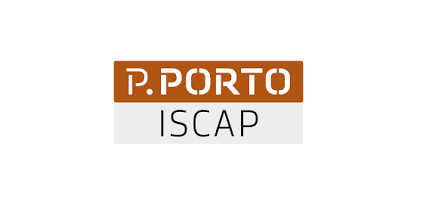
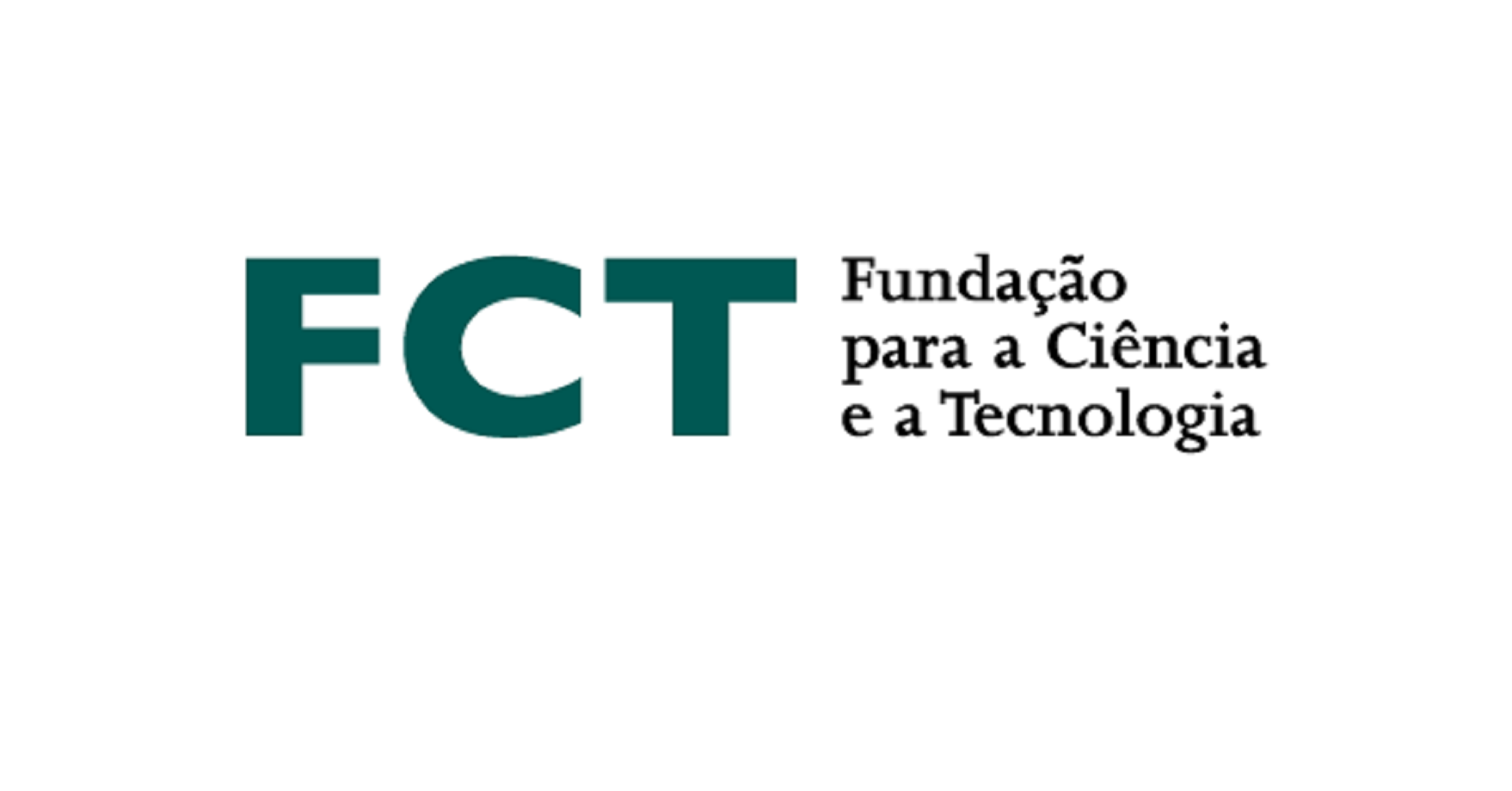
Comissão Organizadora
- João Marques
- Cláudia Santos
- Maria Teresa Roberto
- Rute Costa
- Sara Carvalho
- Raquel Silva
- Teresa Alegre
- Cláudia Ferreira
- Alexandra Albuquerque
Comissão Científica
- João Marques
- Cláudia Santos
- Maria Teresa Roberto
- Rute Costa
- Sara Carvalho
- Raquel Silva
- Teresa Alegre
- Cláudia Ferreira
- Alexandra Albuquerque
- Juan Carlos Diaz Vásquez
- Frieda Steurs
